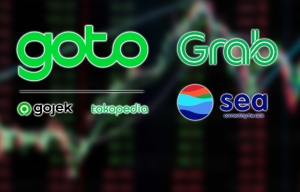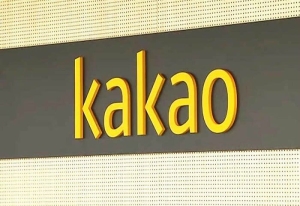Fintech Research
It's crunch time for Southeast Asian platform companies
Southeast Asia’s preeminent platform companies are adjusting to a painful new reality: More is not always better. Sea Group, Grab and GoTo have all expanded at a torrid pace amid a free flow of venture capital funding that only recently started to dry up with the end of ultra-low interest rates and the arrival of greater economic uncertainty. The tougher business environment will put to the test their shaky super app value proposition, especially the idea that fintech works best as part of a broader digital services ecosystem rather than as a pure-play business model.
In Q3 Kakao Bank shines, Kakao Pay lags
Kakao’s fintech results continue to be mixed – a tale of two platforms in some respects. Much like its strategic investor and perhaps spiritual guide Alipay, Kakao has developed a digital bank and payments app as two separate units. Thus far, the online lender Kakao Bank has consistently outperformed the e-wallet Kakao Pay, and that held true once again in the third quarter of the year.We have lauded Kakao many times for developing a profitable financial services super app. It is the only company outside of China to achieve such a feat. However, it might be worth considering at this point if the two separate units are sufficiently complementary.
Fintech may not work out for Xiaomi
Xiaomi is one of China’s and the world’s largest smartphone makers. But the company is not content with that position – given low margins and extreme competition in the sector – and has long been searching for new avenues of growth. That’s how Xiaomi began to move into fintech several years ago. As it turns out, transitioning from technology hardware into digital financial services is much more challenging than Xiaomi likely imagined.
The evolution of P2P lending in Indonesia
Indonesia is gradually turning into a success story for peer-to-peer (P2P) lending, which is able to meet demand for credit that traditional lenders cannot. In the past few years overall lending by fintechs has been growing much faster than that of banks in Southeast Asia’s largest economy, according to the Indonesian Joint Funding Fintech Association (AFPI).
Assessing Bukalapak's fintech forays
You can’t be a big platform company in Indonesia these days and not foray into fintech, not with 181 million unbanked people and many others who are underbanked. Compared to most of its competitors, Bukalapak has been more deliberate about its entry into digital financial services, but it benefits from having fewer costly business units: no ride hailing or food delivery, for instance.
Will Sea’s austerity measures right the ship?
The wheels are coming off the bus of Sea Group’s cash-burning tripartite digital services ecosystem of gaming, e-commerce and fintech amid jitters in the global economy and investor skepticism of the company’s growth-first model. If you thought that even as it hemorrhaged cash by the hundreds of millions of dollars, Sea’s expansion to places like Poland, India and Colombia did not make a lot of sense, you are not alone. The question now is if the company’s austerity measures can both stop the bleeding and reassure investors that its fundamental business model is sound.
Indonesia remains a magnet for fintech investment
In a year that has seen fintech funding slow in many markets, Indonesia is proving to be something of an outlier. In the first half of 2022, Indonesian fintechs managed to raise US$1.8 billion, exceeding the total of US$1.6 billion raised in 2021.
Southeast Asian platform companies bet big on fintech
Southeast Asia’s preeminent platform companies have all bet big on fintech to boost their fortunes and lift them from the red into the black. It is a great idea in theory, but challenging to execute in practice. Competition is intense in the region and the super apps have to compete against pure-play fintechs and others not weighed down by unprofitable units that have nothing or very little to do with financial services. The super app concept only works if there is sufficient synergy among the different services provided by the platform company.
Pakistan’s fintech market is having a busy Q3
Pakistan continues to be one of Asia’s hottest fintech markets, buoyed by growing investor interest, one of the world’s largest unbanked populations and government support for digital finance-supported financial inclusion. Pakistan represents an exceptionally large opportunity for fintechs: Only 1% of its almost US$4 trillion of payments are made digitally. The past month has seen a number of notable deals that show the market is maintaining solid momentum despite a global economic slowdown and greater investor scrutiny in tech startups.
Fintech funding in India is resilient
In Asia and globally fintech funding has been slowing amid economic jitters and rampant inflation. Some cash-burning fintechs are finding that they are running out of cash to burn. Still, there are some exceptions, and India is a notable one. According to a new report from Boston Consulting Group (BCG), from January 2017 to July 2022, the Indian fintech market received US$29 billion in funding from 2,084 deals to date, accounting for 14% of global funding and No. 2 in deal volume. Unlike many other countries, India’s fintech funding has not dropped off sharply this year.
More...
Meta struggles to cash in on Asia’s fintech boom
Meta, perhaps still better known as Facebook, is one of the biggest of Big Tech players in Asia Pacific, the dominant social media network for countries as diverse as India, Japan and Australia. Yet the ubiquity of the Facebook platform in the region, outside of notable exceptions such as China and North Korea, has not translated into success in Asia Pacific’s booming digital financial services market. Quite the opposite: Facebook is less than a footnote in this story. Meta’s inability – thus far – to tap into any of the region’s fintech markets augurs ill for its ability to grow sustainably in APAC.
Taking stock of SoftBank’s Asia fintech investments
SoftBank has not been weathering the downturn in tech stocks and general rising investor skepticism towards growth-first startups especially well. In the second quarter, the company lost a record US$23 billion, prompting CEO Masayoshi Son to engage in some candid self-reflection. He described himself as becoming “somewhat delirious” during the apex of SoftBank’s startup funding binge when the investments were paying off big and says he is now “embarrassed and remorseful.” Nevertheless, some of SoftBank’s Asia fintech investments – which include several big players in the region – could still pay off in the long run.
Revolut is not slowing down in APAC
As fintech startups stare down the barrel of a dot-com-like crash, it is becoming clearer by the day that only the strong will survive. And the strong in this industry, where ironically (given this is financial services) being profitable has not been paramount, tend to have loads of cash to spend. The UK’s Revolut is one of those fintechs who really seems too big to fail, and that is why despite tough macroeconomic conditions the company is pushing full speed ahead into different Asia-Pacific markets including Singapore, Australia and India.
Ride-hailing companies can be profitable, as Uber is proving, and so can fintechs, but can ride-hailing companies become profitable fintechs? Untangling that word salad is something of a heavy lift, much like turning an app-based taxi service into a bank. But there is a clever shortcut that deep-pocketed tech giants like Indonesia’s GoTo can take to bolster their fintech prowess. They can invest in a struggling incumbent bank and make it profitable.














